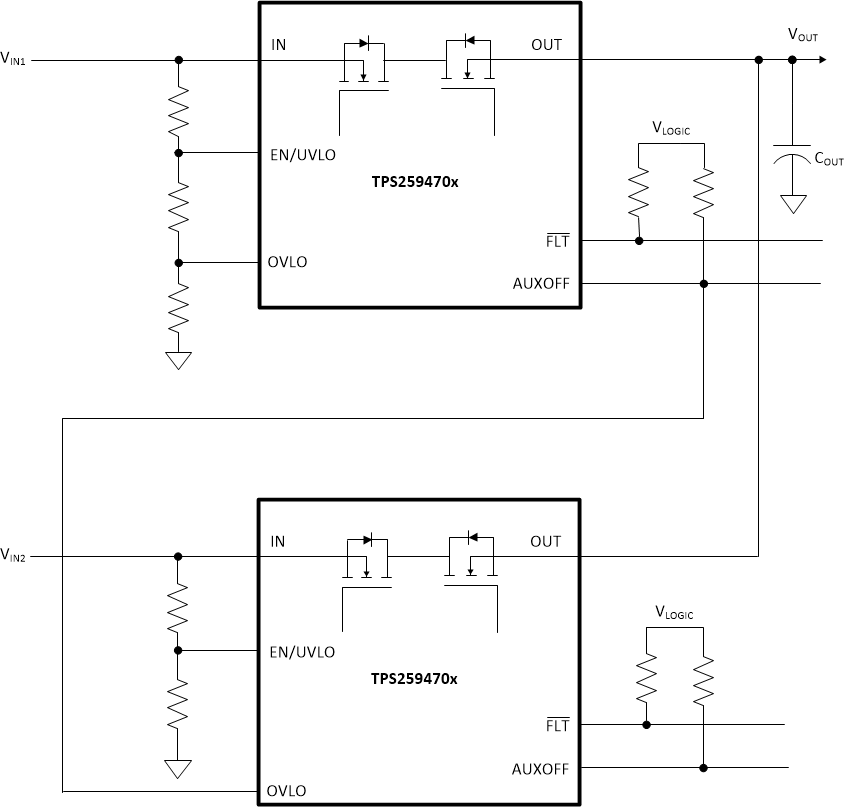SLVAE51A November 2018 – October 2020 LM7310 , TPS2100 , TPS2101 , TPS2102 , TPS2103 , TPS2104 , TPS2105 , TPS2110 , TPS2111 , TPS2111A , TPS2112 , TPS2112A , TPS2113 , TPS2113A , TPS2114 , TPS2114A , TPS2115 , TPS2115A , TPS2120 , TPS2121 , TPS25947
2.2 Automatic
An automatic power MUX does not require an external signal to switch between loads. There is often a default priority (such as IN1) and the device will determine under what conditions to switch to IN2. The first condition will be when IN1 drops below a certain threshold (such as if IN1 is removed and the voltage decays). There could be other conditions such as during an overvoltage event on IN1, where the supply may switch to IN2 to power the load. This control method is commonly used when there is no microcontroller available or to simplify the design architecture and eliminate the need to rely on the microcontroller's resources. Note that most automatic power MUX solutions can be used in automatic mode or manual mode but not both.
 Figure 2-2 Automatic Power MUX using 2x TPS259470x eFuses
Figure 2-2 Automatic Power MUX using 2x TPS259470x eFuses